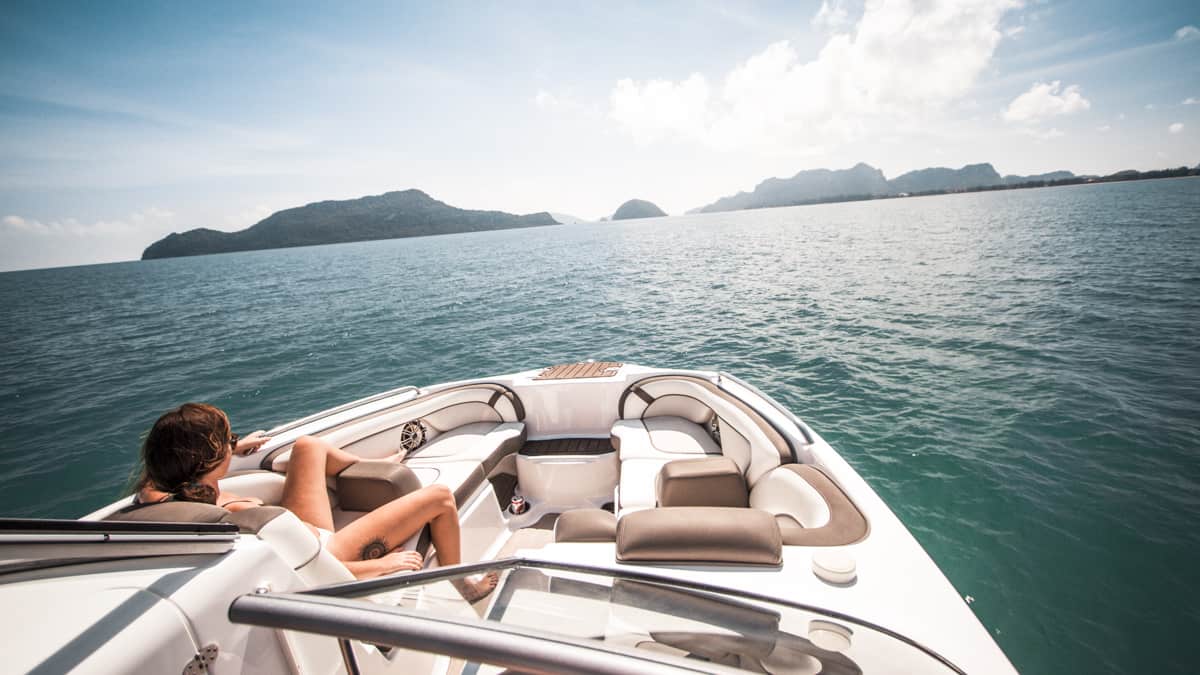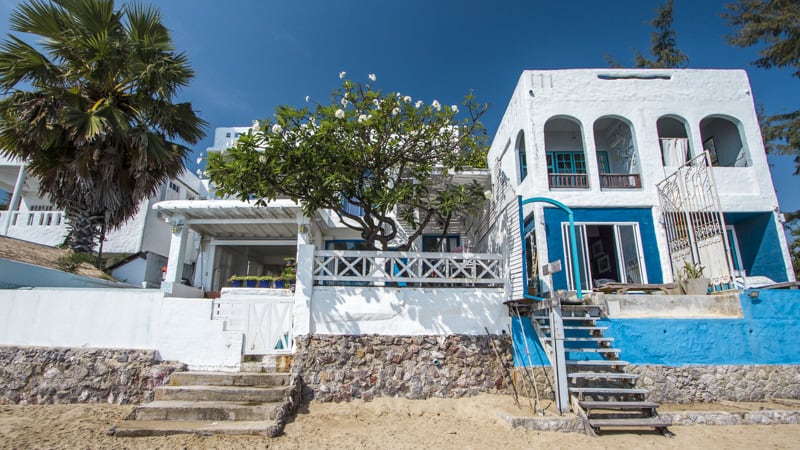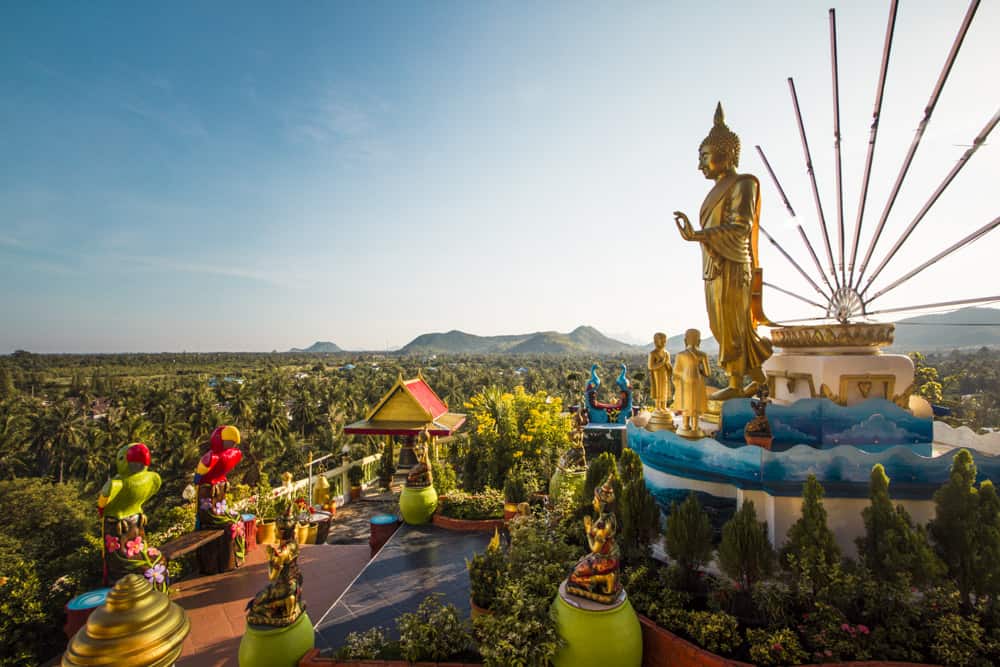A quick travel guide to Thailand
If you are one of the many digital nomads who has wandered around Southeast Asia, chances are Thailand needs no introduction for you. After all, Chiang Mai is already considered a world’s top nomad destination by many, and has recently started to seriously challenge the longstanding reign of Bali, its Indonesian neighbour.
Thailand’s biggest draw isn’t the easy climate, or the tasty food, or even its beautiful islands, coasts and mountains. People come here for all of that, but the reason why so many come back is without a doubt the kindness and contagious happiness of the people.
And of course, Thailand is an incredible adventure destination for sports lovers, with world class destinations for everything from mountain biking, wakeboarding, kitesurfing, surfing, paragliding, SUPing or rock climbing.
FYI: if you need tips on where to find affordable accommodation during your travels, check out this handy guide on Thailand’s best places to stay.
Currency in Thailand
The local currency in Thailand is Thai Baht. Check out the most up-to-date exchange rates here.

Language & English Proficiency
The local language, Thai, is spoken throughout the country, with different dialects popping up on a regional basis. English proficiency varies greatly depending on where you are within Thailand (urban cities and tourist hotspots tend to have a much higher level than rural areas, for example). According to the EF Proficiency Index, Thailand’s English proficiency sits at 49.78% which is slightly lower than the Asian average of 53.6% but much higher than its neighbours in Cambodia and Laos, both of which are in the lowest 10%.
Culture in Thailand
A predominantly Buddhist country, Thai culture is mainly one of calmness, modesty, and respect for one another. Religion plays a big role in Thai society and, in effect, Thai people are known to be kind, hospitable, and non-confrontational. The only thing nearly as important as religion in Thai culture? Food.
Thailand is a monarchy. Love and respect for the royal family is an integral part of Thai society, with every local business- both big and small- proudly displaying a framed picture of the current king. In 2016, the former King Bhumibol Adulyadej passed away after 70 years of reign- making him the longest reigning monarch in the history of the world. His son, Maha Vajiralongkorn, is the current king.
The country is divided into 6 regions, and in terms of language, food, ethnicity, and traditions, the difference between them is pretty phenomenal. Compare, for example, the northeastern Isan region with the southern Malay peninsula and you could easily feel like you’re looking at two different countries.
Nearly two-thirds of the population of Thailand is made up of ethnic groups. Bordering with Cambodia, Laos, Malaysia, and Myanmar and sitting within 100 km of Vietnam and China, Thailand’s culture and ethnicities have been greatly influenced by its neighbours.

Visa for Thailand
Tourists from 42 countries are eligible for a 30 day visa exemption stamp which they can avail of when passing through immigration at any international airport (and selected land borders) in Thailand- no need to apply for or prepare anything in advance. This can be extended for another 30 days at any local Thai immigration office throughout the country for a fee of 1,900 THB.
Tourists planning to stay longer can apply at a Thai embassy/consulate for a 60 day single entry tourist visa or a 6 month multiple entry tourist visa (though the requirements for the latter are far more involved), both of which can be extended as mentioned above. Contrary to what you might read on other websites or forums, double and triple entry visas for Thailand do not exist anymore.
Other passport holders can avail of a 15 day visa on arrival. You can see the full list of passport eligibility here.
So far, there are little to no visa provisions for freelancers or remote workers. Unless you’re contractually employed by a Thai company, you won’t qualify for a Thai work visa. You may, however, apply for a business visa which allows you to conduct business operations during your stay in Thailand, but doesn’t actually allow you to gainfully work.
Electricity in Thailand
Electricity in Thailand is quite reliable compared with many other Southeast Asian countries. Virtually all of Thailand is connected to power (even in rural areas) and power outs are more or less non-existent.
The electricity in Thailand is 220V and plugs are 2 (or 3) prong. Plug sockets accommodate both flat prongs like in the U.S. and round prongs like in Europe and most of Asia.

Internet in Thailand
Like the electricity, the internet in Thailand is quite good compared with many of the neighbouring countries. In large cities like Bangkok, WiFi speeds typically hover around 50 Mbps while in rural areas it might be closer to 20 (though, naturally, this isn’t a hard and fast rule for every part of Thailand). Many places are already fitted out with fiber optic cables.
3/4G is widespread and black spots are few and far between. Average 4G speeds in Thailand are 9 Mbps, which is in line with the Asia-Pacific region average of 9.69 Mbps.
Weather in Thailand
Thailand enjoys a tropical climate and warm weather throughout the year. That said, it’s still a seasonal country and both the weather and temperature tend to fluctuate somewhat depending on season and geography.
November-February are typically the months with the best weather in Thailand, with warm temperatures, clear skies, low likelihood of rain, and fresh breeze from the northeast monsoon. Although, during this time of year the temperature can sometimes drop and become quite chilly- especially in the northern regions and during the night.
Meanwhile, July-October is rainy monsoon season in Thailand, during which time you can expect short bursts of torrential rainfall on a near daily basis. Just before the rainy season (March-June) temperatures soar to 34-40 degrees Celsius and humidity levels are equally high. The rainy season brings some respite from the heat, although average temperatures will still range from mid 20’s to 30 degrees.

Dos & Don’ts while travelling in Thailand
Do:
- Try to learn some basic Thai words
- Smile and be friendly with locals
- Try all of the Thai food you can get your hands on
- Visit temples and learn about the national religion
- Wear appropriate clothes and remove your shoes when visiting temples (cover yourself past the knees and elbows)
- Remember the country is extremely diverse, and there’s much more to it than just the usual tourist hotspots. Get off the beaten track!
Don’t:
- Drink tap water
- Assume everyone should understand you just because you speak English
- Get frustrated by the language barrier. Be patient, calm, and understanding.
- Be disrespectful of the local customs, culture, religion, or monarchy
- Disrespect or damage money (since it bears the king’s image, it’s considered a criminal offense)
- Touch adults on the head, point your feet at someone, or throw items (such as a lighter to your Thai friend).
- Litter. Be conscious of your footprint while you’re a guest here
- Haggle prices where it’s inappropriate to do so. Nobody likes a stingy tourist trying to knock down the price with someone who needs every cent.
0 Comments